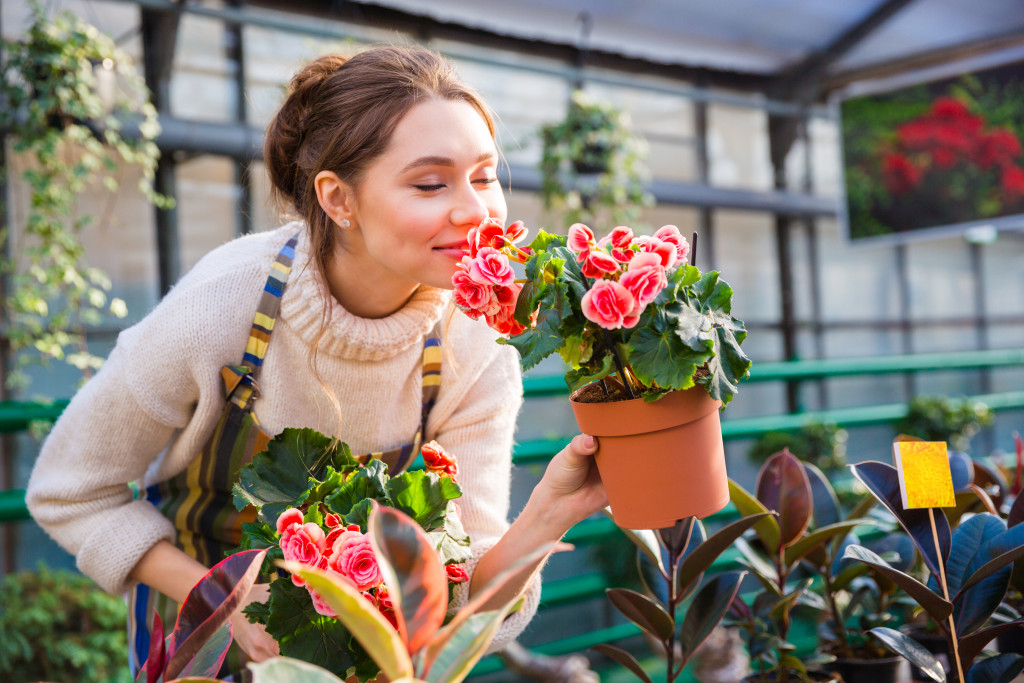- Choose the best location for your well-lit indoor garden with consistent room temperature.
- Plan the layout of your indoor garden, considering sunlight and a sunroom for additional light.
- Select plants that are easy to care for and compatible with the light levels in your home.
- Create a healthy environment with proper soil, watering, and pest control.
- Care for your plants by regularly watering them, fertilizing, trimming away dead leaves, and rotating them periodically.
Indoor gardens are a great way to bring a touch of greenery and nature into our homes. Not only do indoor gardens add an aesthetic appeal, but they also have numerous health benefits. They purify the air, reduce stress and improve our mood.
However, designing an indoor garden requires some planning and creative ideas. This article will guide you in developing a beautiful indoor garden that will enhance your home décor and create a relaxing environment.
Choose the best location
Having a garden indoors allows you to grow various plants all year round. However, not all parts of your house are conducive to plant growth. Factors like lighting, humidity, and temperature all play a role in determining the health and development of your plants.
Light is Key
One of the most critical factors in determining the success of your indoor garden is the amount of light it receives. Plants need light to perform photosynthesis, which they use to convert sunlight into energy.
Ideally, your indoor garden should be near a windowsill with plenty of sunlight. However, if this is impossible, consider investing in some grow lights. These unique lights emit the right spectrum of light for plants to grow.
Room Temperature
The room temperature is another essential factor to consider when picking a location for your indoor garden. Depending on your chosen plants, they may require a specific temperature range to grow optimally.
Most plants grow well in temperatures between 65 and 75 degrees Fahrenheit. Remember that sudden temperature fluctuations can also harm your plants, so avoid placing them near the front door or windows you frequently open.
Plan your layout

The layout of your indoor garden is essential as it helps determine your space’s overall look and feel. To help you plan, consider creating a sketch of your area on paper or using a computer program. This will help you visualize how the plants, furniture, and other elements will fit together in your garden.
Another thing you need to consider when planning your layout is a sunroom where sunlight can enter and provide energy for your beloved plants. However, don’t forget to hire professional sunroom installers to ensure your sunroom is installed correctly and safely. A well-designed sunroom can enhance the aesthetic appeal of your indoor garden and help your plants grow stronger and healthier.
Select the right plants.
The type of plants you select will determine the success of your indoor garden. Start with plants that are easy to care for, such as succulents, ferns, spider plants, and peace lilies. Choose plants that are compatible with the light levels in your home and have similar watering needs. Also, ensure you have the proper size and depth of containers for each plant.
Create a healthy environment.
To ensure your indoor garden thrives, create the optimal environment for your plants. A healthy environment will support the growth of your plants and ensure they last for years to come. Here are some tips:
Soil & Watering
Indoor plants are often potted in soil mixes that contain peat moss or vermiculite. While these ingredients can help retain moisture, they can also make watering difficult. Clean your plants thoroughly and let any extra water drain away.
This will prevent water from accumulating at the bottom of the pot and causing root rot. Be sure to monitor the soil’s moisture level, as it’s easy to overwater indoor plants. Checking the soil moisture level with your finger is a great way to determine when your plants need watering.
Pest Control

Pests can be a common problem with indoor plants. Some common pests like spider mites and mealybugs can quickly infest indoor plants and cause significant damage. To prevent pests, it’s essential to inspect your plants regularly. If you do notice an infestation, there are several natural pest control remedies that you can use, such as neem oil or a mixture of water and dish soap.
Care for your plants
Caring for your plants requires regular attention. Water your plants as needed, and ensure the soil is moist and well-draining. Fertilize your plants as instructed, and trim away dead or damaged leaves. Lastly, rotate your plants every few weeks to ensure they receive even sunlight and prevent lopsided growth.
In conclusion, designing an indoor garden can be a fun and creative project to add life and beauty to your home. With some planning, selecting the right plants, layout, and care, your indoor garden will flourish and benefit you and your family. So why not give it a try, and create your very own beautiful indoor garden today?

